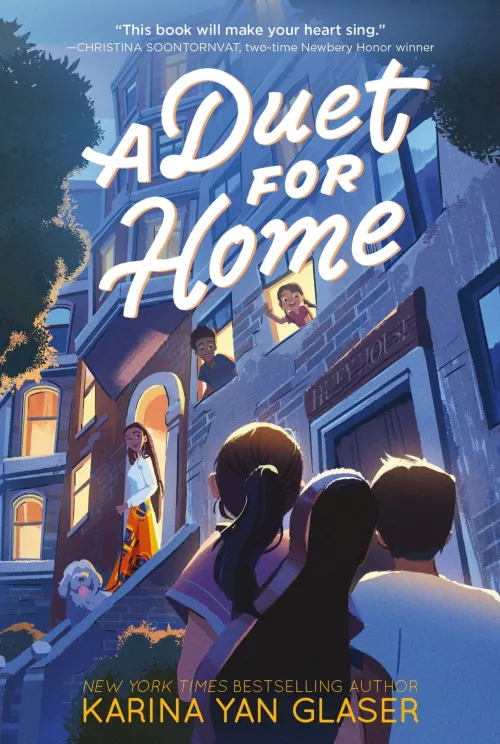Share this book
Music can elicit all kinds of emotions. In A Duet for Home, while listening to the music coming from next door, Tyrell found it “weird how four notes could make him feel so many things.” But he likes classical music, and he shares with June that it makes him feel calm. Ask students to share what they know about how other characters in the book relate or react to music. Talk about why they think classical music is so appealing to June and Tyrell.
Promote listening and appreciating different types of music while getting students to think about how music can make people feel. Start with some joint music-making to foster connection and encourage sharing. Come together in a circle and sing something together. It could be a school song, a popular tune everyone sings along with, or something you make up on the spot.
After everyone is warmed up, open a discussion about the types of music students like to listen to and how it makes them feel. Ask them to make a short list or a playlist of songs that affect them. Select a variety of music from everyone’s lists to play for the group as well as some of the music featured in A Duet for Home. With each song they listen to, give students time to write about how they connected with the music. What moved them? What feelings or range of emotions did they experience while listening? How did this song help them figure out or affirm their feelings? Finish by having students share their thoughts.
Questions for Discussion or Reflective Writing
- How does June feel about Huey House? How is that similar or different to how Tyrell perceives it? What does June gain from being at Huey House and how does that change her perceptions of it?
- Describe the relationships June has with her mother and with her sister. How do their relationships evolve (or not) throughout their time at Huey House? How does your own relationship to a parent, guardian, or sibling compare?
- Why is June’s viola so important to her? How does classical music impact June and Tyrell’s friendship? What effects does music have on June, Tyrell, and Maybelle? What effects does music have on you?
- What are Dominica’s personality traits, likes, and dislikes? Do you believe she is a good person to teach June the viola? Why or why not?
- What are family services or social services? What qualities and skills do you think are important for social workers to have? What kind of person is Ms. Gonzalez? What qualities make her a good social worker and family services director?
- What helped June, Jeremiah, and Tyrell become vocal advocates for the future of Huey House and for safe housing? How have you reacted to a situation that seems unfair or unjust? What support and policies are in place in your community for people experiencing homelessness?
Related Resources
Educators’ Guide from HarperCollins
Telemann’s Viola Concerto in G Major
Johannes Brahms’ Lullaby
Eugène Ysaÿe's Rêve d'enfant
Tips for Teachers & Staff: How to Support Students Experiencing Homelessness from SchoolHouse Connection
More Titles to Try
Join Our Movement



